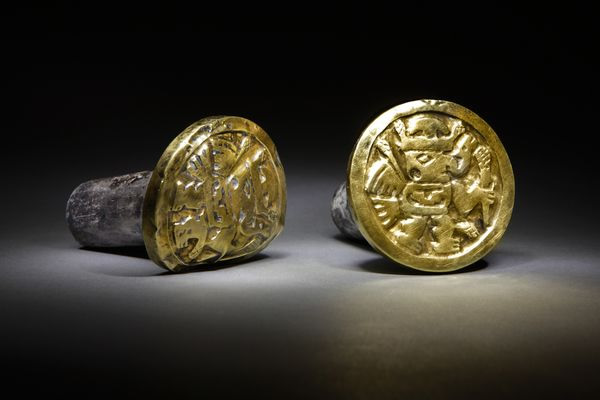Archaeologists have discovered
something truly stunning, the first unlooted imperial tomb of the Wari,
an ancient civilization in South America that existed between 700 and
1000 A.D. The tomb, located in modern day Peru, is filled with
treasures, precious artefact and - cue the ominous music - human
sacrifice:
Tomb robbers had long dumped rubble on the
ridge. Digging through the rubble last September, Giersz and his team
uncovered an ancient ceremonial room with a stone throne. Below this lay
a large mysterious chamber sealed with 30 tons of loose stone fill.
Giersz decided to keep digging. Inside the fill was a huge carved wooden
mace. "It was a tomb marker," says Giersz, "and we knew then that we
had the main mausoleum." [...]
As the archaeologists
carefully removed the fill, they discovered rows of human bodies buried
in a seated position and wrapped in poorly preserved textiles. Nearby,
in three small side chambers, were the remains of three Wari queens and
many of their prized possessions, including weaving tools made of gold.
"So what were these first ladies doing at the imperial court? They were
weaving cloth with gold instruments," says Makowski.
National Geographic Daily News has the scoop:
Here.


No comments:
Post a Comment